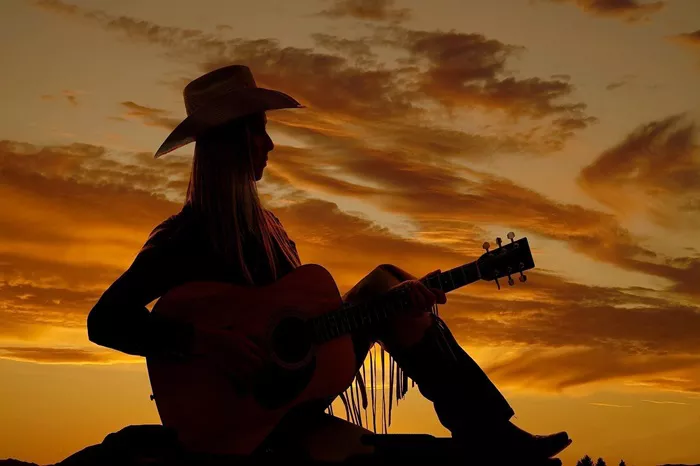Country music has carved a deep and enduring place in the tapestry of American culture, but its journey to popularity was a dynamic evolution shaped by diverse influences and cultural shifts. This article delves into the historical roots, pivotal moments, and key figures that propelled country music into the hearts and homes of millions.
Early Beginnings of Country Music
Tracing the Origins and Influences
Country music traces its origins to the folk traditions brought by European immigrants to the rural South of the United States in the early 20th century. These musical traditions blended with African-American influences, including blues and spirituals, creating a distinctively American sound that resonated with the experiences and emotions of everyday people.
The Birth of Commercial Country Music
The 1920s marked the emergence of commercial recordings and radio broadcasts that popularized country music beyond regional boundaries. Artists such as The Carter Family and Jimmie Rodgers became early stars of the genre, their songs reflecting the hardships and joys of rural life, love, and faith. These recordings laid the foundation for what would become a vibrant and enduring genre.
The Golden Age of Country Music
From Radio to Hollywood
The 1940s and 1950s witnessed the golden age of country music, as the genre expanded its reach through national radio broadcasts and Hollywood films. Singers like Hank Williams, Patsy Cline, and Johnny Cash became iconic figures whose songs resonated with audiences across the country. Their heartfelt lyrics and soulful melodies captured the essence of American life and emotions.
Impact of Television and Grand Ole Opry
The advent of television in the 1950s further propelled country music into the mainstream. Shows like “The Grand Ole Opry” showcased top country artists to a national audience, solidifying Nashville, Tennessee, as the epicenter of the genre. The Opry’s live broadcasts brought country music into living rooms across America, fostering a sense of community among fans and artists alike.
Evolution and Diversification
Adapting to Changing Times
The 1960s and 1970s saw country music evolve with the broader cultural shifts of the era. Artists like Loretta Lynn, Merle Haggard, and Willie Nelson brought new themes and sounds to the genre, addressing social issues, love, heartbreak, and the complexities of modern life. Country music’s ability to evolve while staying true to its roots ensured its continued relevance and popularity.
Crossover Success and Global Influence
In the 1980s and 1990s, country music experienced unprecedented crossover success, reaching new audiences both within the United States and internationally. Artists such as Garth Brooks, Shania Twain, and George Strait achieved mainstream success with their blend of country, pop, and rock influences. Their innovative sound and compelling storytelling attracted a diverse fan base and cemented country music’s place in popular culture.
See also: 11 COUNTRY STARS WHO ARE VETERANS
Contemporary Country Music
A Modern Era of Diversity and Innovation
Today, country music continues to thrive as a diverse and dynamic genre that embraces a wide range of styles and influences. Artists like Carrie Underwood, Luke Bryan, and Blake Shelton dominate the charts with their blend of traditional country sounds and contemporary production techniques. The genre’s ability to adapt to changing musical trends while preserving its heritage ensures its enduring popularity among listeners of all ages.
Digital Age and Streaming Platforms
The rise of digital technology and streaming platforms has democratized access to country music, allowing fans to discover and enjoy a vast catalog of songs old and new. Platforms like Spotify, Apple Music, and YouTube have become integral to the genre’s distribution and promotion, connecting artists directly with their audience and fostering a global community of country music enthusiasts.
Cultural Impact and Legacy
Celebrating a Musical Legacy
Country music’s enduring popularity and cultural impact extend far beyond its musical achievements. The genre’s themes of love, loss, perseverance, and patriotism resonate deeply with listeners, reflecting shared experiences and values across generations. Its storytelling prowess continues to inspire songwriters and musicians worldwide, ensuring its legacy for years to come.
Influence on Popular Culture
From movies and television shows to fashion and lifestyle, country music’s influence on popular culture is unmistakable. Iconic songs have been featured in films and commercials, while country artists have become style icons and ambassadors for brands. The genre’s ability to transcend musical boundaries and connect with diverse audiences underscores its cultural significance and enduring appeal.
Conclusion
The popularity of country music has been shaped by a rich tapestry of history, culture, and creativity. From its humble beginnings in rural America to its global influence in the digital age, country music has evolved and diversified while staying true to its roots. Its ability to tell compelling stories and evoke deep emotions has endeared it to millions of fans worldwide, ensuring its place as a beloved genre for generations to come.
As we celebrate the journey of country music, we honor the pioneers, innovators, and storytellers who have shaped its past and continue to inspire its future. Whether listening to classic hits or discovering new artists, country music remains a timeless and cherished part of the American musical landscape, offering a soundtrack to life’s most memorable moments and emotions.
Related topics:
HOW DID COUNTRY MUSIC BEGIN? [REVEALED]
5 REASONS WHY THE ACADEMY OF COUNTRY MUSIC REMOVE GARTH BROOKS
TOP 10 INSTRUMENTS IN COUNTRY MUSIC

